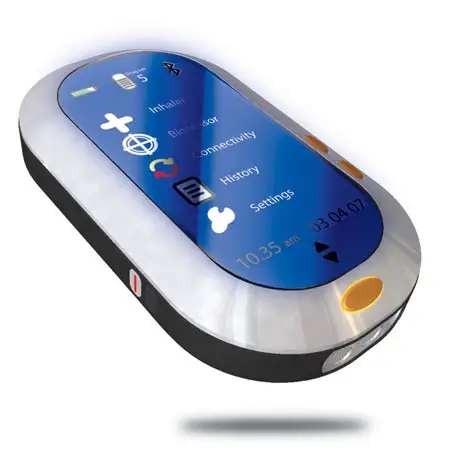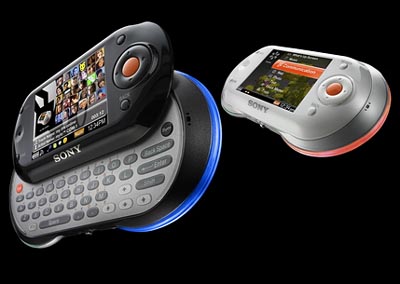
The Dell Inspiron Duo is an impressive sight. It’s not often that we’re this enamored by a device’s physical design, but the Dell Inspiron Duo simply does it for us. The machine is a feat of engineering, and it really redefines the convertible laptop segment. This 10.1″ machine is part netbook, part tablet, but unlike many rivals, it doesn’t compromise much in terms or portability and form factor to be both. When you open up the package, it looks like a Mini 10 or any other 10″ netbook.
But once the lid is open, a simple press on the LCD allows it to swivel around and lock into place, in reverse. Close the lid back down atop the keyboard, and you’re now looking at a tablet. It’s one of the more innovative notebook designs we’ve seen in recent memory, and we cannot applaud Dell’s engineering team enough for both thinking of this implementation and nailing it with such precision.
Outside of the crazy design, the machine is a rather standard netbook on the inside. There’s an Atom CPU, a chiclet keyboard and a 32-bit copy of Windows 7 Home Premium. The Duo starts at $549.99, making it one of the more affordable convertible tablets out there. Let’s take a more detailed look at the specifications:
# Intel Atom N550 (1.5GHz; dual-core; 1MB cache)
# 2GB of DDR3 RAM
# 10.1″ Multi-Touch LCD (1366×768 resolution)
# Intel HD integrated NM10 GPU
# 320GB Hitachi Travelstar Z7K320 7200RPM HDD
# 802.11b/g/n Wi-Fi
# No optical drive
# 1.3 Megapixel Webcam
# Bluetooth 3.0
# No video outputs
# USB 2.0 x 2
# RJ-45 (Ethernet 10/100)- Via Dock
# Headphone Port
# SD / MMC / SDHC Multimedia Card Reader (Via Dock)
# Stereo Speakers
# Chiclet Keyboard
# Gesture-Enabled Trackpad
# 3.39 Pounds (with 4-cell battery installed)
# Removable 4-Cell Li-ion Battery (29Whr; up to 3 hours, 57 minutes of claimed life)
# 11.22″ (W) x 7.66″ (D) x 1.03 – 1.13″ (H) (Dimensions)
# Windows 7 Home Premium (32-bit)
# 1-Year Warranty
At 3.39 pounds, it’s hardly any heavier than your standard netbook, and the 10.1″ screen provides a standard 1366×768 screen resolution and enough room for a nicely sized chiclet keyboard. Dell has also done a good job keeping the bezel thin and the line between the swiveling LCD and the plastic remarkably thin. You can barely tell that it’s there. The textured lid was nice in our estimation, and the trackpad was nicely sized for a netbook. We liked the fact that it was texture-less; perfectly smooth and easy to navigate. The separate left/right mouse buttons were also very much appreciated, and the click travel was ideal. It’s rare that we get to say both of those things in a netbook review.
Dell also kept the palm rest stickers to a minimum (only 3!), and there’s also very little going on around the edges. While the machine looks a lot like a netbook, the port selection resembles that of a tablet. There are no ports on the front and back edges, and the left edge is only home to a headphone jack and two USB 2.0 ports (all of which are covered by a plastic shield that can be popped up when you need access).
There are no ports at all on the right edge, only a power button. Tucked just under that edge is a speaker. On the bottom, there’s a subtle docking connector which allows the machine to sit upright in the JBL speaker dock (a $50 option). This means that you can dock your machine for use with a Bluetooth mouse and keyboard since a BT module is included, and that dock also provides an Ethernet jack, SD card slot, two more USB 2.0 ports and another audio jack. There are separate AC inputs on the device itself and on the dock, and the AC updater for each is differently sized. So forget about carrying only one cable when you travel; you’ll need both.
There’s no optical drive, and surprisingly, no media card slot on the Duo itself. There’s also no video output. We cannot recall another 10.1″ netbook that lacks a video output port of some kind; even the optional JBL dock doesn’t have a video output. This fact alone leads us to believe that Dell intends for this to be a tablet first, and a netbook second.
However, there’s a full copy (32-bit) of Windows 7 Home Premium, so don’t worry about limited functionality from the software side. The keyboard and mousepad were both very rigid and solid, and overall, we felt that this was one of the more solid netbooks on the market. At $550, we didn’t expect anything less, but it’s always good to see a company live up to expectations.
If there’s one thing a netbook (or a tablet) needs to be really competitive, it’s great battery life. No matter how great the software or the hardware, an ultra-mobile machine needs great battery life to be really useful in the field. Unfortunately, the 4-cell battery in the Inspiron Duo isn’t quite potent enough to pass muster. It couldn’t even last three hours on a full charge in our testing, which is low for a netbook, and very low for a tablet. Many of Asus’ netbooks last well over 4 hours, and the iPad can easily last 8, just for comparison.






















0 comments:
Post a Comment